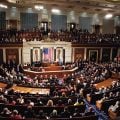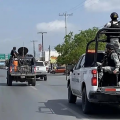Mundo
Yemen, a nation on the brink of chaos
The political crisis gains a sectary profile, and could make of the Middle Eastern poorest nation a battlefield between Iran and Saudi Arabia

Accustomed to a moderate degree of violence, Yemen, the poorest nation in the Middle East, has lived in the latest months some of the bloodiest episodes of its history, and proceeds to become one more failed state in the region, following the example of Syria and Libya. An ancient political conflict, aggravated by an ill-conceived stabilization plan following the Arab Spring, has intensified and, more recently, intertwined with a sectary strife between Shiites and Sunnites. The present instability, that threatens to evolve into a civil war and Yemen’s territorial division, became even more acute in the night of March 25, with the start of an international intervention led by Saudi Arabia.
In 2011, Yemen was one of the several countries swept by the so-called Arab Spring. The protest wave had as its target the country’s former dictator, Ali Abdullah Saleh, who had occupied the presidency for 33 years. On the contrary of Egypt, Tunisia and Libya, where the despots in turn were arrested, expatriated or murdered, Yemen had a negotiated solution, which gave Saleh a chance to keep acting on local politics. In exchange for immunity and for keeping his party (the General People’s Congress, GPC) in the presidency, the dictator surrendered the post to his deputy, Abd Rabbuh Mansur Hadi. Elected president in 2012, in a ballot where he was the only candidate, Hadi had the mission of governing the nation in a period of transition, supervising the elaboration of a new Constitution and the presidential elections planned for 2014.
At that point, the Yemenite transition was considered a “model” by the US administration and by the UN. Instead of the agitation seen in Egypt, Tunisia and Libya, Yemen should have a moderate and calm transition. The plan failed in a clamorous way, however, because of its mandatory nature. The transition was not commanded by local players, as the youth that led the protests against Saleh, neither it has contemplated the plural Yemenite society. It was guided by the so-called G-10, that included eleven entities: the five nations with permanent seats in the UN Security Council (China, United States, France, United Kingdom, Russia); five Persian Gulf countries (Saudi Arabia, Bahrain, United Arab Emirates, Kuwait, Oman); and also one representing the European Union. Two needs united G-10: to keep Yemen free from Iran’s influence and with a government aligned with the “War to Terror” — Yemen holds the Al Qaeda in the Arabic Peninsula (AQAP) headquarters, the busiest arm of the organization founded by Osama Bin Laden, responsible, for example, for the idealization of the attack against the French journal “Charlie Hebdo” in Paris in January.
The detachment between the transition command and the Yemenite reality was expressed in the new Constitution, endorsed by the UN and by G-10. Instead of giving more representativeness to the different social groups in the country, the Charter, apparently based on the failed Iraqi Constitution, foresees the transformation of Yemen into a federation of six regions, with little autonomy before the central government. The maintenance of a centralized governance, which is at the root of Yemen’s political problems, and which has contributed to the bloody civil war between North and South in 1994, was rejected by two important opposition groups: the southern tribes, which preach the independence of Sanaa; and the so-called Houthis, a political-religious movement of Shiite origin, based on the northern area of Yemen, created to counterpose the Saudi influence and to fight the persecutions suffered by the Shiah.
During last year, the situation in Yemen has so acutely deteriorated, both from the political and the administrative points of view. Among several unpopular measures, the cut of fuel subsidies, announced in July 30, 2014, provoked anger and protests. Disappointment with the Hadi government, added to the insufficient response of the president to regional demands for more autonomy and political participation, has put Yemen on a path without return.
Encouraged by a convenience alliance with former dictator Saleh, who still enjoys loyalty from a significant part of the Yemenite army, the Houthis started a march to the nation’s capital, Sanaa. In September, the movement took control of the city, trying to obtain by force the desired constitutional revisions. Without success, in January the group has occupied several state buildings, ministries and the presidential palace, forcing the demise of Abd Rabbuh Mansur Hadi and dissolving the government. After some weeks under Houthi custody, Hadi fled in February to southern Yemen, declaring the city of Aden as the central government’s new siege. Since then, the Houthis, with the clear help of the forces loyal to Saleh, seem to be engaged in a bid to take control of the whole Yemenite territory. The country’s third city, Taiz, was captured in March 22, and the palace that hosts the Hadi administration in Aden has been repeatedly bombed. Three days later, Hadi supposedly fled from the country.
Shiah vs. Sunni?
The Houthis’ move has averse effects, being perceived, internally and externally, as a Shiite campaign promoted by Iran to take hold of Sunnite territory.
Within the country, the expansion of Houthis’ domination is rejected by a large part of the population. In Taiz, for example, thousands of people went to the streets in a protest against the presence of the Shiah movement. Sunni tribes, with financial and logistical support from Saudi Arabia, have enlisted a 10,000-strong front to contain the Houthi progress. In the Sunni areas where the tribes are less organized, resistance is offered mostly by Jihadist groups, namely the Al Qaeda, which in recent years had several shocks with the Houthis. The risk is that the Shiah wave from the north could galvanize the Sunni population, shuffling Yemen’s internal political conflict with a sectary confrontation quite uncommon in the country — Zaidism, the Houthis’ version of Shiism, is closest to the Sunni creed. The shocking double attack on March 20, in which 142 people died and hundreds were wounded in two Shiah mosques in Sanaa, is a sign that this process is on course. Claimed by the Islamic State, which hitherto had not acted in Yemen, the attack showed that chaos may just be starting.
 A Yemeni supporter of the Saudi-led coalition’s Operation Decisive Storm against the Huthi rebels in Yemen carries a portrait of Saudi King Salman bin Abdulaziz al-Saud during a demonstration against the Shiite Huthi rebels in the southwestern city of Taez on April 4, 2015
A Yemeni supporter of the Saudi-led coalition’s Operation Decisive Storm against the Huthi rebels in Yemen carries a portrait of Saudi King Salman bin Abdulaziz al-Saud during a demonstration against the Shiite Huthi rebels in the southwestern city of Taez on April 4, 2015
As long as the internal situation in Yemen decays, the chances that the nation becomes the stage for a showdown between Saudi Arabia and Iran grow. The two nations are avowed enemies and are engaged in a fierce dispute for power and leverage in the Middle East, with political-military, diplomatic and economic aspects.
For Saudi Arabia, the instability in Yemen, with which it shares a huge and porous border, is a serious problem, specially because the Saudi government does not have allies in the country strong enough to unite it. Presently, Iran has gained influence on Iraq, to the north of Saudi Arabia. Seeing an Iran-allied group dominating also its southern border, as is Yemen’s case, the Saudis might take a bet on trying to divide the Yemenite territory in two. On the 25th, after mobilizing armored vehicles and artillery equipment to the Yemenite border, Saudi Arabia started the Operation Decisive Storm, and began bombing Yemen. The Saudi campaign is pointed by four of the other five nations of the GCC — Bahrain, United Arab Emirates, Qatar, and Kuwait (Oman refused to take part) –, besides Egypt, Jordan, Morocco, Pakistan, and Sudan. The US approve the mission, with logistic and intelligence support to the bombings.
Iran’s Foreign Relations minister, Mohammad Javad Zarif, declared that the Saudi attacks should stop “immediately.” According to him, the offensive is “a dangerous step” that will only worsen the country’s situation.
As we can see, it is catastrophic. The post-Arab Spring transition, coordinated by the voracious G-10, not only did not resolve the nation’s problem as it has aggravated them, ignoring the local players and keeping the former dictator in activity. The new government went on not giving space to groups historically marginalized, and those, namely the Houthis, were seduced by the prospect of imposing their demands by force. With the world and regional powers discredited by the failed transition or devising a military interference, it would be the Yemenite society’s task to look for pacific solutions. Caution and balance, however, are not available. The activist Tawakkol Karman, winner of the Nobel Peace Prize in 2011 for her activity in the Arab Spring, called the Houthis’ — Yemenites as herself — advance a “Persian invasion project,” an allusion to the Iranian influence on the Shiite movement. Yemen is before the cliff and seems unable to step back.
Apoie o jornalismo que chama as coisas pelo nome
Os Brasis divididos pelo bolsonarismo vivem, pensam e se informam em universos paralelos. A vitória de Lula nos dá, finalmente, perspectivas de retomada da vida em um país minimamente normal. Essa reconstrução, porém, será difícil e demorada. E seu apoio, leitor, é ainda mais fundamental.
Portanto, se você é daqueles brasileiros que ainda valorizam e acreditam no bom jornalismo, ajude CartaCapital a seguir lutando. Contribua com o quanto puder.



